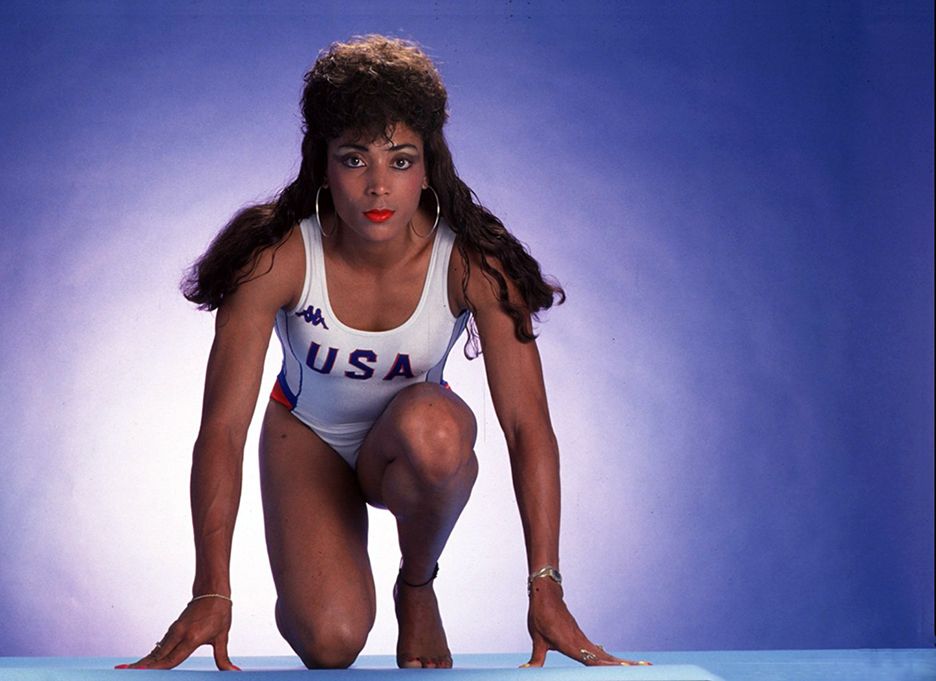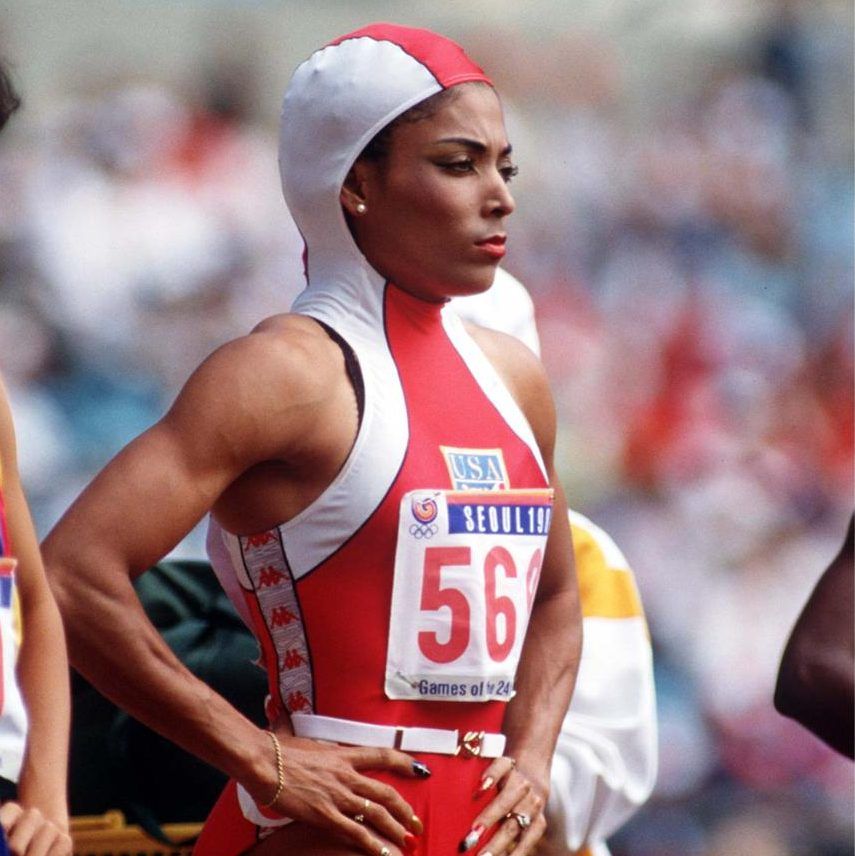Flo Jo took over the world of sports and fashion over two decades ago before her reign was cut short by death. She left behind an unwavering legacy many still revere to date.
Sprint Legend Florence Griffith Joyner is best known for her record-breaking escapades on the race tracks in the 80s. Despite her excellence as an athlete, she managed to leave her mark in the world of fashion, with her show-stopping outfits and long colorful fingernails, easily becoming an all-time favorite.
WHO WAS FLORENCE GRIFFITH JOYNER?
Florence Joyner, widely known as Flo Jo remains known as the fastest woman of all time to date, setting the long-standing record in the 100m and 200m races in 1988. The track and field athlete is a California native who developed a knack for racing from a young age.

She eventually made her racing prowess into a career that spanned almost a decade before her retirement. Post-retirement, Joyner bagged several endorsement deals, also becoming an actress. Additionally, she nurtured her fashion prowess and embraced designing as a profession.
JOYNER’S EARLY LIFE
Joyner’s life began with her birth on December 21, 1959, in Los Angeles, California. She was one of eleven children born to Robert and Florence Griffith.
While in Elementary school, the legend began running track meets on weekends as part of the Sugar Ray Robinson organization. She carried on racing prowess in high school, winning the Jesse Owens National Youth Games at fourteen. She won the competition again the next year, proving herself as an outstanding athlete.
In addition to setting the sprinting and long jump records at Jordan High School, Griffith introduced the wearing of fashionable tights to the school’s track team. She soon enrolled at the California State University, Northridge to obtain a college degree and further her sprinting career.
LIFE ON THE TRACKS
Joyner joined her college track team, which was coached by the infamous Bob Kersee. She dropped out soon after for financial reasons, eventually transferring to the University of California, Los Angeles to continue her studies.

She joined UCLA’s track team, also coached by Kersee, and before long, qualified for 100m trials for the 1980 Summer Olympics. Joyner made her Olympic debut in 1984, taking home the silver medal in the 200-meter sprint.
Following her performance at the Olympics, the sprinter went on to win the 100-meter IAAF Grand Prix Final, with Kersee as her coach. After a temporary hiatus, she returned to the track in 1987, competing in the World Championships in Rome, where she ran the 200m sprint and finished second.
FLORENCE JOYNER`S OLYMPIC EXCELLENCE
She continued making waves in athletics, eventually performing the heart trick of all time by completing the 100m sprint in 10.49 seconds at the US Olympic trials. Joyner set another record with her 10.61 seconds performance at the finals a day later.
The UCLA alum also set the American record at the 200m race, finishing in 21.77 seconds. To date, her 1988 world records in both 100-metre and 200-meter still stand.

Throughout her career, Joyner was popular for her eye-popping outfits like the infamous one-legged, form-fitting racing suit and long, flamboyant fingernails. With her mix of style and speed, the racer swept through the world of sports like a whirlwind, leaving a lasting impact.
JOYNER’S PERSONAL LIFE
Florence Joyner married Al Joyner, the 1984 triple jump champion and brother of the legendary athlete Jackie Joyner-Kersee in 1987. The duo first met at the 1980 Olympic trial. Al went on to become Griffith’s coach.
Following their union, she adopted the legal name Florence Dolorez Griffith-Joyner. Over the years, the name Florence Joyner stuck in people’s hearts, eventually shortened to Flo Jo.
In November 1990, Florence and Al Joyner welcomed a daughter, Mary Ruth Joyner, making them the perfect family of three.

FLORENCE JOYNER’S RETIREMENT
Following her excellence at the 1988 Olympics, Joyner took a step back from the world of sports. She embraced fashion designing as a career, building her brand while bagging endorsement deals.
However, Joyner’s retirement left many questioning the genuineness of her track performances and record speed. Many speculated the athlete used performance-enhancing drugs throughout her career to boost her speed and contribute to her muscular physique.
Some theories suggested Joyner’s coach Kersee encouraged his trainees to use performance-enhancing drugs and steroids to boost speed as part of his training techniques. However, the legend denied those claims, insisting she never failed a drug test throughout her career. A report by CNN also proved the racer passed at least 11 drug tests in 1988 alone.

Despite her retirement from athletic competitions, Joyer remained active in the sports realm. Beginning 1993, she served as co-chair of the President’s Council on Physical Fitness. She established a foundation for children in need and was eventually inducted into the Track and Field Hall of Fame.
FLORENCE JOYNER’S DEATH
On September 21, 1988, Joyner experienced an epileptic seizure at her Mission Viejo home in California. She never survived the crisis. A report from the chief forensic pathologist of the Orange County Sheriff-Coroner Department confirmed that the icon suffocated to death due to the seizure.
Investigation into Florence Joyner’s cause of death resurrected rumors of her alleged steroid use, with most claiming such drugs contributed to her untimely demise. However, the autopsy results only showed traces of Tylenol and Benadryl, with no traces of steroids.

In an interview following the release of the autopsy results, Al Joyner expressed how much he hoped for those results to beat down the defaming speculations about his late wife for good.
Over three decades later, Joyner’s records remain unbroken, with no valid proof of foul play, making her athletic escapades an awe-inspiring mystery.

